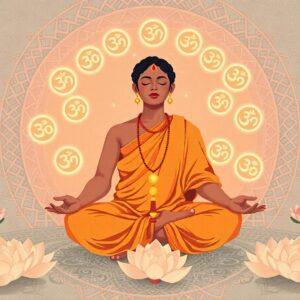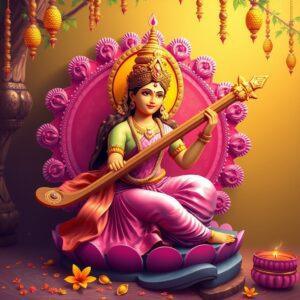
Hinduism, a religion steeped in tradition, celebrates marriage as a sacred union, not just of two individuals, but of families and communities. For Indians with strong cultural roots, particularly those in the middle and upper-middle classes, weddings are significant life events marked by elaborate rituals and customs passed down through generations. This article delves into the intricacies of Hindu wedding traditions, explaining their significance and how they continue to be observed in the modern world.
Historical and Cultural Significance of Hindu Marriages
Hindu marriages are deeply rooted in Vedic traditions, reflecting India’s rich cultural and historical tapestry. Ancient scriptures like the Vedas and Manusmriti lay the foundation for these rituals. Marriage, or ‘Vivaha,’ is one of the sixteen ‘Samskaras’ (sacraments) in Hinduism, marking important milestones in life. It’s considered a sacred duty (‘Dharma’) essential for family lineage and societal harmony. Hindu marriages are spiritual partnerships, uniting two souls with Sanskrit mantras, sacred fire, and vows, symbolizing the couple’s commitment to Dharma, Artha, Kama, and Moksha, life’s four aims. These customs date back over 5,000 years.
- Gotra (Lineage): Gotra is crucial in Hindu marriages, helping determine suitable alliances and avoiding consanguinity. It signifies descent from a common ancestor and is a key factor considered during matchmaking.
- Traditional Roles: The Dharma Shastras define specific roles and responsibilities for the bride and groom, guiding their conduct and duties within the marriage and family. These roles emphasize mutual respect and shared responsibilities.
- Regional Variations: Hindu wedding traditions vary across regions. North Indian, South Indian, Maharashtrian, and Bengali weddings each have unique customs and rituals, reflecting the diverse cultural landscape of India. These variations add to the richness of Hindu wedding traditions.
- Contemporary Adaptations: Urban and diaspora communities adapt these age-old customs to modern lifestyles while preserving their essence. This allows for a balance between tradition and practicality in today’s world.
Pre-Wedding Rituals: Setting the Stage for the Celebration
Hindu weddings are preceded by a series of elaborate pre-wedding rituals, each with its own unique significance. These rituals create anticipation and excitement for the main event.
- Roka Ceremony: The Roka ceremony marks the formal acceptance of the relationship by both families. It signifies the beginning of the wedding preparations and involves exchanging gifts and blessings. This ceremony often sets the date for the engagement.
- Engagement (Sagai): The Sagai is a formal engagement ceremony where rings are exchanged, solidifying the commitment. Families bless the couple and celebrate their upcoming union. This is often a grand celebration with family and close friends.
- Mehndi Ceremony: Intricate henna designs adorn the bride’s hands and feet during the Mehndi ceremony. This symbolizes joy, beauty, and good fortune. The ceremony is often accompanied by music, dance, and merriment.
- Sangeet Night: The Sangeet is a vibrant celebration filled with music, dance, and joyful camaraderie. Family and friends come together to celebrate the upcoming wedding. It’s a time for merriment and bonding.
- Haldi Ceremony: Turmeric paste is applied to the bride and groom for purification and blessings. This ritual is believed to ward off evil spirits and enhance their glow. The ceremony is filled with laughter and well wishes.
- Ganesh Puja/Kalash Puja: Seeking Lord Ganesha’s blessings is an essential part of Hindu wedding preparations. This puja invokes auspiciousness and removes obstacles for the couple’s journey together.
- Trousseau and Bridal Attire: The preparation of traditional garments and jewelry is a significant part of the pre-wedding rituals. Brides often choose elaborate sarees, lehengas, and jewelry, while grooms select traditional sherwanis.
For all your puja needs, explore our extensive collection of premium agarbatti and other essential items at poojn.in. We offer a wide range of products to make your ceremonies complete and authentic.
Wedding Day Rituals: The Sacred Union
The wedding day is the culmination of months of preparation, filled with sacred rituals that unite the couple in holy matrimony. These rituals vary based on family preferences and can include sangeet, mehndi, haldi, baraat, mandap, and kanyadaan.
- Baraat: The groom’s procession to the bride’s home or wedding venue, accompanied by music, dance, and joyful celebration, is a vibrant display of tradition. The Baraat signifies the groom’s arrival to claim his bride.
- Jaimala/Var Mala: The exchange of garlands between the bride and groom signifies their mutual acceptance and respect. This ritual marks the beginning of their journey together.
- Kanyadaan: In this poignant ritual, the bride’s father gives his daughter away to the groom, symbolizing the transfer of responsibility and care. It’s a deeply emotional moment for both families.
- Vivaha Homa (Sacred Fire): The sacred fire, Agni, serves as a divine witness to the marriage. Offerings are made into the fire, signifying the couple’s commitment and seeking blessings for their union.
- Saptapadi (Seven Steps): The couple takes seven steps together around the sacred fire, each step representing a vow and a promise for their future life together. This ritual solidifies their bond.
- Sindoor Daan & Mangalsutra: The groom applies sindoor (vermillion) to the bride’s forehead and ties the mangalsutra (sacred necklace) around her neck. These symbolize her new status as a married woman.
Poojn.in offers a wide selection of Sindoor containers and other wedding essentials. Visit our website to find everything you need for your special day.
Post-Wedding Rituals: Welcoming a New Beginning
Following the wedding ceremony, several post-wedding rituals mark the bride’s integration into her new family and bless the couple’s future.
- Vidaai: The bride bids farewell to her parental home, a bittersweet moment filled with emotion. This marks her transition to a new chapter in her life.
- Griha Pravesh: The bride is welcomed into the groom’s home with auspicious rituals, symbolizing her entry into a new family and a new life.
- Aarti & Puja: Ceremonies and prayers are performed to bless the newlywed couple and their home, invoking prosperity and happiness.
- Reception/Walima: The groom’s family hosts a reception to introduce the bride to their extended family and friends, celebrating the new union.
- Pag Phera: The bride returns to her parental home for a short visit, signifying the continued bond between the two families.
Significance of Ritual Items in Hindu Weddings
Each ritual in a Hindu wedding involves specific items that hold symbolic meaning, adding depth and cultural richness to the ceremonies.
- Mandap: The decorated canopy under which the wedding rituals are performed, symbolizing a sacred space.
- Mangal Sutra, Sindoor & Toe Rings: These signify a married woman’s status and commitment.
- Kalash, Coconut & Rice: Used for auspicious beginnings and prosperity.
- Flowers & Garlands: Represent beauty, blessings, and new beginnings.
- Turmeric, Kumkum & Mehendi: Used for purification, blessings, and aesthetic purposes.
- Sacred Fire (Agni): The divine witness to the marriage vows.
- Traditional Attire & Jewelry: Enhances the cultural richness of the wedding.
Modern Adaptations and Contemporary Practices
While deeply rooted in tradition, Hindu weddings have evolved to incorporate modern elements, reflecting the changing times.
- Destination Weddings: Couples opt for exotic locations while maintaining traditional rituals.
- Fusion Weddings: Blending Hindu customs with elements from other cultures.
- Wedding Planners: Professional assistance in organizing and managing the complexities of modern weddings.
- Technology Integration: Live streaming, virtual invitations, and digital RSVPs.
- Eco-friendly Weddings: Focus on sustainability and minimizing environmental impact.
- Customization in Attire: Blending traditional designs with contemporary fashion trends.
- Pre-marital Counseling & Workshops: Preparing couples for the responsibilities of marriage.
Looking for the perfect wedding attire? Explore our exquisite collection of traditional and contemporary outfits at poojn.in. We offer a wide variety of options to make your special day even more memorable.
Conclusion: A Celebration of Love, Tradition, and Modernity
Hindu weddings beautifully blend tradition with modernity, creating cherished memories that last a lifetime. Each ritual, from pre-wedding preparations to post-wedding ceremonies, holds deep significance. As couples embark on their journey together, these traditions serve as a reminder of their cultural heritage and the values that bind their families and communities.


